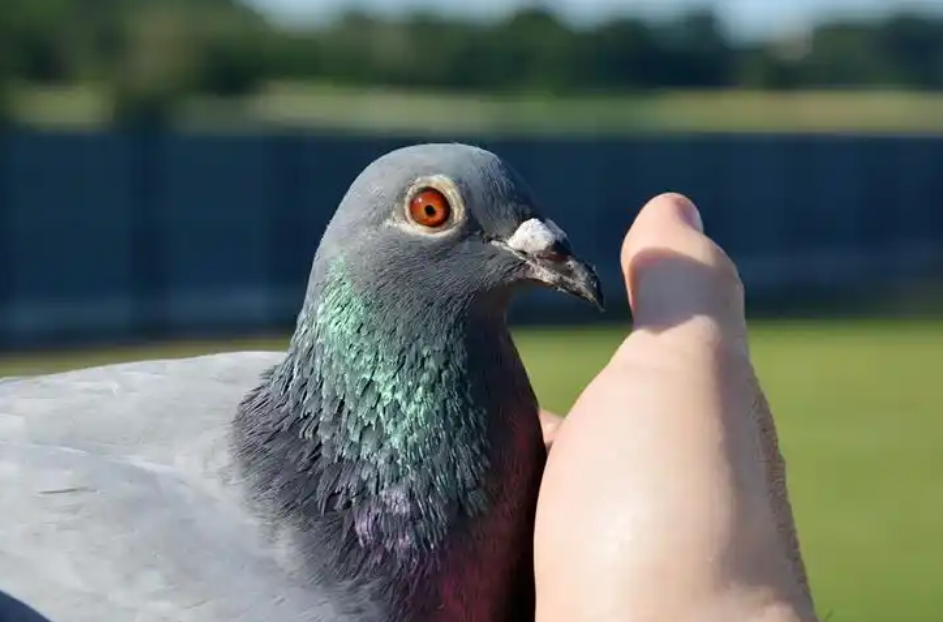How to Sex a Pigeon? If you’ve ever tried to determine the sex of a pigeon just by looking at it, you probably realized it’s not as easy as it seems. Unlike some animals where males and females have clear visual differences, pigeons are masters of disguise when it comes to gender. In this article, we’ll break down why visual observation doesn’t work, what the most reliable method is (hint: it’s PCR), and whether there really is a magic device called a “pigeon sexer” that can do the job. We’ll also explore other techniques for sexing pigeons, their accuracy, and how you can use them.
Why You Can’t Determine a Pigeon’s Sex Just by Looking at It
Some birds, like peacocks, have striking differences between males and females, making it easy to distinguish between them. Unfortunately, pigeons are not one of those species. Both male and female pigeons share similar feather coloration and body size, which makes visual sexing nearly impossible.
Many pigeon breeders rely on behavioral differences, such as:
- Males performing a courtship dance, puffing up their chests and cooing loudly.
- Females being more passive and less likely to display aggressive mating behaviors.
However, these behaviors are not foolproof. Some females may act like males, and some males may not show typical courtship behaviors at all. As a result, the only way to get an accurate answer is through scientific testing.
The Most Accurate Method: PCR-Based DNA Sexing
If you want a guaranteed answer to whether your pigeon is male or female, DNA testing using PCR (Polymerase Chain Reaction) is the gold standard. This method analyzes the bird’s genetic material to determine its sex with near 100% 正確さ.
How Does PCR Sexing Work?
- Collecting a Sample – A small sample of the pigeon’s DNA is needed, usually taken from feathers, blood, or even eggshell membranes from newly hatched chicks.
- DNA Extraction – The sample is processed in a lab to extract the genetic material.
- PCR Amplification – Scientists target a specific gene that differs between male and female pigeons. Pigeons have a ZW sex-determination system, where males are ZZ and females are ZW. The PCR process amplifies these genes for analysis.
- Electrophoresis and Detection – The amplified DNA is run through a gel or analyzed using fluorescence detection to determine if the sample has a ZZ or ZW pattern.
- Results – The lab will confirm whether the pigeon is male or female based on the genetic markers.
Example Case
Imagine you have two pigeons that you suspect are a breeding pair, but they never lay fertile eggs. You send a few plucked feathers to a DNA lab, and within a week, the results show that both pigeons are males. Without PCR testing, you might have wasted months waiting for eggs that would never come!
Is There a Device Called a “Pigeon Sexer”?
You might come across products marketed as “pigeon sexers”—but beware, these are just PCR-based services repackaged under a fancy name. There is no single device that can instantly determine a pigeon’s sex in the way a thermometer reads temperature. If someone claims otherwise, it’s a marketing gimmick. All accurate sexing methods require biological analysis, and PCR remains the most reliable.
Other Methods for Sexing Pigeons
While PCR testing is the most accurate, there are other methods used by breeders and researchers. Here’s how they compare:
1. Cloacal Examination (Vent Sexing)
- Process: A trained expert gently manipulates the pigeon’s cloaca to check for differences in reproductive structures.
- Accuracy: Moderate, but requires extensive experience.
- Best For: Experienced breeders or veterinarians.
2. Endoscopic (Surgical) Sexing
- Process: A veterinarian inserts a small camera (endoscope) into the pigeon’s body cavity to visually inspect the reproductive organs.
- Accuracy: Very high.
- Downsides: Requires anesthesia, making it riskier for the bird.
- Best For: High-value breeding pigeons where PCR testing is not available.
3. Behavioral Observations
- Process: Watching how pigeons interact—males usually coo, strut, and try to court females.
- Accuracy: Low; some birds may not follow typical gendered behavior.
- Best For: Basic assumptions, but should be confirmed with DNA testing.
4. Bone Structure Examination
- Process: Feeling the spacing of the pubic bones—females generally have wider spacing to accommodate egg-laying.
- Accuracy: Moderate, but not foolproof.
- Best For: Quick field assessments.
Conclusion: What’s the Best Method?
If you want definitive 結果, PCR testing is the way to go. Other methods, like vent sexing or endoscopic examination, can be useful but either require expert knowledge or invasive procedures. And if you see a product claiming to be a “pigeon sexer” that works instantly, remember—it’s just DNA testing with a fancy name.
If you breed pigeons or need to confirm the sex of your birds, consider sending a sample to a professional DNA testing service. It’s the easiest and most accurate way to know for sure!
References
- Ellegren, H. (1996). First steps towards a DNA-based sex test for pigeons. Molecular Ecology, 5(5), 653-657.
- Griffiths, R., Double, M. C., Orr, K., & Dawson, R. J. (1998). A DNA test to sex most birds. Molecular Ecology, 7(8), 1071-1075.
- Fulton, J. E. (2012). Avian genetics: a review of the sex-determination methods in birds. Poultry Science, 91(2), 450-456.


Leave a Reply